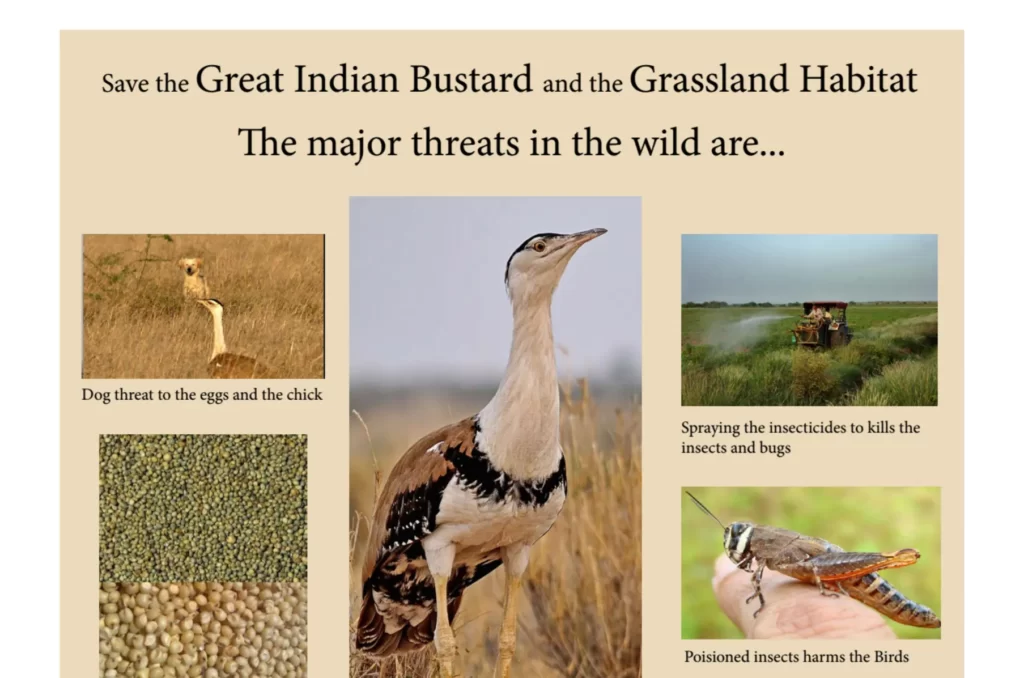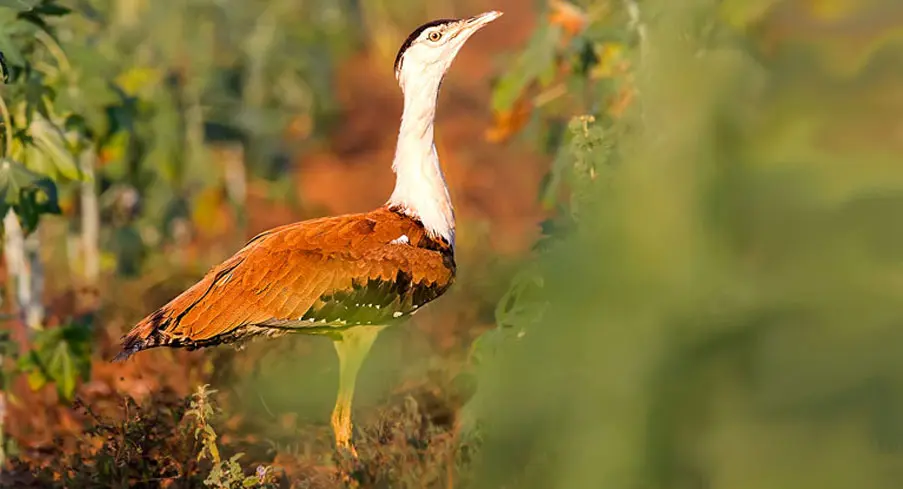Conservation Plan for Great Indian Bustards
India is home to a variety of wildlife, including the Great Indian Bustard, a critically endangered bird species. The Great Indian Bustard is one of the largest flying birds in the world, but its population has decreased significantly over the past few decades due to various reasons, such as habitat loss, hunting, and collision with power lines. However, the government has recently launched a conservation plan for the Great Indian Bustards to protect them and increase their population.
As per the conservation plan, the government will set up special breeding centers for the birds and create safe habitats for them. The plan also includes increasing awareness among local communities about the importance of the Great Indian Bustard and encouraging them to participate in conservation efforts. Additionally, the government will work towards reducing the number of power lines in areas where the birds are known to fly to prevent collisions.
The Great Indian Bustard is an important part of India’s biodiversity, and the conservation plan is a step in the right direction towards protecting the species. It will not only help in increasing the population of the bird but also create awareness among people about the need for wildlife conservation.

Why this News is Important:
India has been known for its rich biodiversity and wildlife for centuries, but with the increasing human population and their needs, the natural habitats of various species are being destroyed. In recent years, many species have become endangered or extinct, and the Great Indian Bustard is one such example. The conservation plan for the Great Indian Bustard is important because it shows that the government is taking steps to protect the species and preserve India’s biodiversity. This is a positive step towards promoting wildlife conservation and ensuring that future generations can enjoy the beauty of nature.
Historical Context:
The Great Indian Bustard was once found in large numbers in various parts of India, including the grasslands of Rajasthan, Gujarat, Maharashtra, and Madhya Pradesh. However, the population of the bird has decreased significantly over the past few decades due to various reasons such as habitat loss, hunting, and collision with power lines. In 2011, the International Union for Conservation of Nature (IUCN) listed the Great Indian Bustard as critically endangered.
5 Key Takeaways from “Conservation Plan for Great Indian Bustards”:
| Serial Number | Key Takeaway |
|---|---|
| 1. | The Great Indian Bustard is a critically endangered bird species in India. |
| 2. | The population of the bird has decreased significantly due to habitat loss, hunting, and collision with power lines. |
| 3. | The government has launched a conservation plan for the Great Indian Bustard to protect the species and increase their population. |
| 4. | The conservation plan includes setting up special breeding centers and creating safe habitats for the birds. |
| 5. | The conservation plan is a positive step towards promoting wildlife conservation and preserving India’s biodiversity. |
In conclusion, the Great Indian Bustard is a critically endangered bird species in India, and the government’s conservation plan for the species is a positive step towards protecting it and preserving India’s biodiversity. The plan includes setting up special breeding centers, creating safe habitats, and increasing awareness among local communities about the importance of the bird. By implementing the conservation plan, the government can increase the population of the bird and ensure that it continues to be a part of India’s rich wildlife heritage.
Important FAQs for Students from this News
Q1. What is the Great Indian Bustard?
A1. The Great Indian Bustard is one of the largest flying birds in the world and is found in India.
Q2. Why is the Great Indian Bustard endangered?
A2. The Great Indian Bustard is endangered due to various reasons such as habitat loss, hunting, and collision with power lines.
Q3. What is the conservation plan for the Great Indian Bustard?
A3. The conservation plan for the Great Indian Bustard includes setting up special breeding centers, creating safe habitats, and increasing awareness among local communities about the importance of the bird.
Q4. What is the importance of the conservation plan for the Great Indian Bustard?
A4. The conservation plan is important because it shows that the government is taking steps to protect the species and preserve India’s biodiversity.
Q5. What is the historical context of the Great Indian Bustard?
A5. The Great Indian Bustard was once found in large numbers in various parts of India, but its population has decreased significantly over the past few decades due to various reasons.
Some Important Current Affairs Links

















